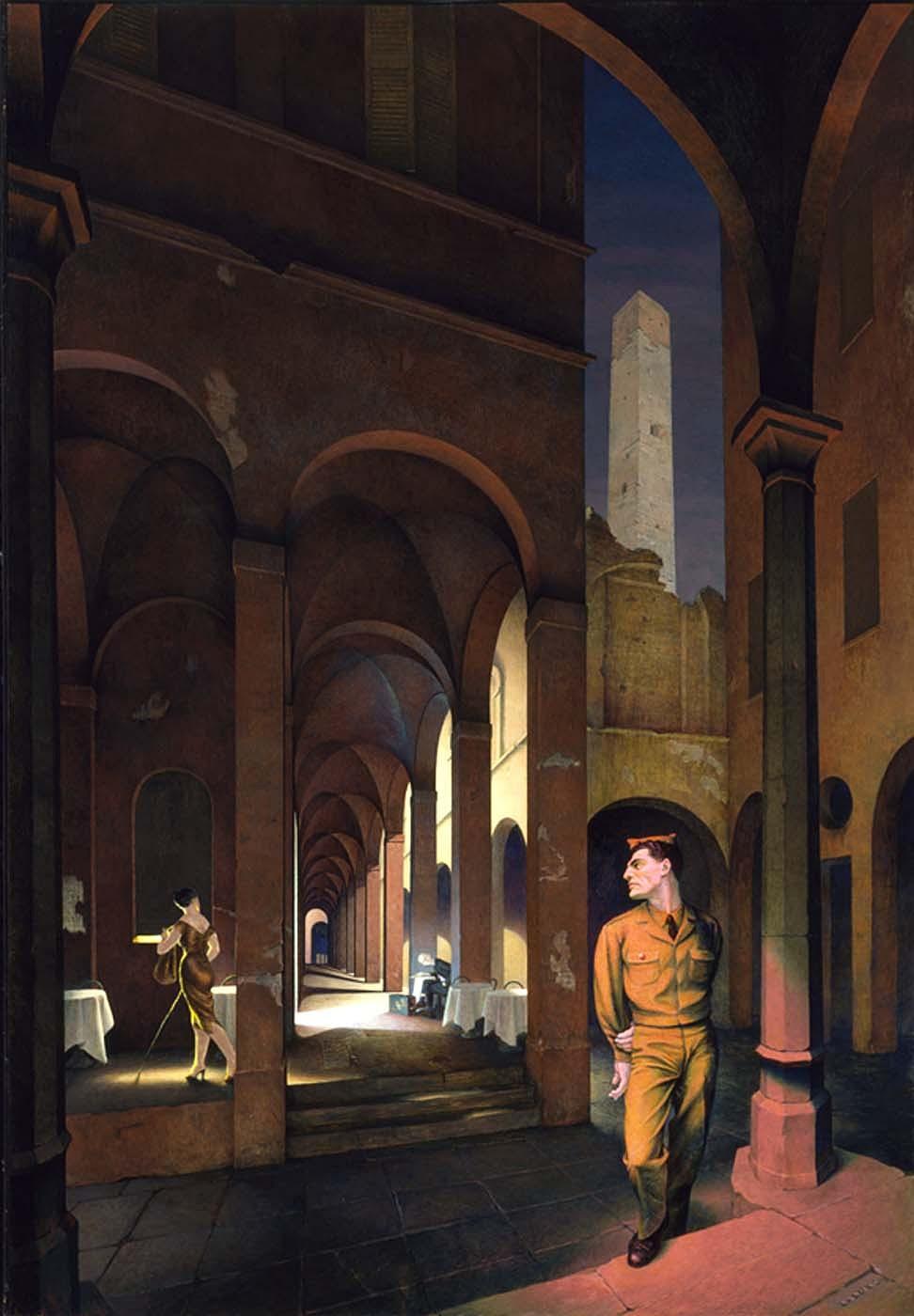
Paul Cadmus and George Tooker were artists, friends, and for a time, lovers. They shared studio space in Greenwich Village and were part of a close-knit group of queer artists in New York City in the 1940s. While the post-war New York art world was paying attention to the burgeoning Abstract Expressionist movement, Cadmus and Tooker favored realism over abstraction.
Cadmus’s Night in Bologna and Tooker’s The Waiting Room both appear to me as theater, as if a play were unraveling before our eyes, but the dialogue is for us to imagine. The stage has been set, but what will happen? Curator Melissa Ho describes the Cadmus painting as a “triangle of observation and desire.” An Italian soldier at bottom right has his sights set on a woman under the vaulted ceiling of the arcade. She, in turn, is gazing towards an American tourist seated a short distance away, who seems more interested in the soldier. There’s an erotic charge to the triangle that allows the eye to travel among the three, but it’s a triangle of endless longing.
Tooker sets The Waiting Room in a nameless holding area where small booths are numbered with bureaucratic significance unknown to the viewer. As Melissa Ho observes, the people in this room, like in the Cadmus painting, are “similarly psychologically distant though in physical proximity.” Who are they? What are they waiting for? Cadmus’s painting does have a bit of electricity running through it, while the people in Tooker’s painting remain disconnected. The artist offered his thoughts on the painting,:“The Waiting Room is a kind of purgatory—people just waiting— waiting to wait. It is not living. It is a matter of waiting— not being one’s self.”
I wonder, too, if that’s a commentary about the challenges of coming out and embracing one’s own queer identity.
Night in Bologna and The Waiting Room are currently on view side by side in the exhibition, Artist to Artist, which features pairings of works by artists whose lives intersected at crucial moments. Viewing these together is a moment to reflect on their lives and creativity and the contributions of queer artists to American visual culture.
This story is part of a series that looks at objects in the Smithsonian American Art Museum’s collection, and is based on materials written by Melissa Ho, curator of twentieth century art at SAAM.



















